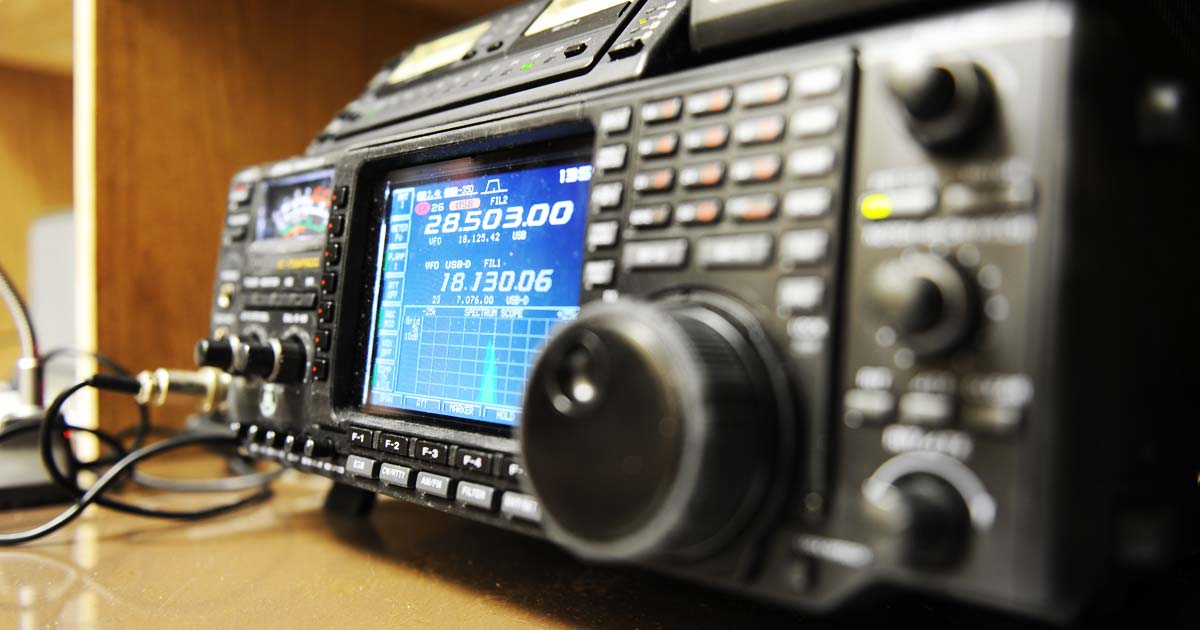
<< radio home
<< index
by disinfoniacs #69 & #1
>>>>

An amateur radio has two basic functions — to transmit your signal to other people’s radios, and to receive signals from other radios to you. When you put both the sending and receiving functions into one radio, it’s called a transceiver – a unit combining the functions of a transmitter and a receiver.
When you are ready to talk on any kind of radio, you’ll use the PTT or “push-to-talk” button. Electrically, a transceiver’s PTT button switches the transceiver from receive to transmit when grounded. The PTT button is on the left side of this handheld radio.
To get your radio on the frequency you want to transmit on or listen to, the transceiver uses an oscillator. An oscillator is a circuit that generates a signal at a specific frequency. The oscillator does both generation of the transmit frequency and helps process the received signal.
The oscillator is responsible for creating a steady frequency carrier signal that the radio uses to transmit your voice or other audio. The audio is combined with the carrier signal using modulation, which is the process of adding information, such as speech, to a carrier wave. Modulation allows the audio signal to be transmitted over the airwaves and received by other radios.
When a radio signal is received, it is processed by the transceiver’s receiver circuit. The receiver circuit uses an antenna to capture the incoming RF signal and then amplifies and filters the signal to improve its quality. The amplified signal is then demodulated, which separates the audio signal from the carrier wave and makes it available for listening.
Sensitivity refers to the capability of a receiver to detect the presence of a signal. A sensitive receiver can pick up weaker signals than a less sensitive one. It is essential to have a sensitive receiver to detect weak signals in conditions where there are obstacles such as mountains or buildings between the transmitter and receiver. Sensitive receivers can also help in communicating with other stations when there is a significant distance between the two. When it comes to radio communication, sensitivity is a vital factor that can have a significant impact on the quality of communication. The more sensitive the receiver, the better it can pick up weak signals and ensure reliable communication.
Selectivity is the ability of a receiver to distinguish and separate multiple signals that may be present at the same time. A selective receiver is able to filter out unwanted signals and amplify the desired signal. The level of selectivity of a receiver depends on its design and circuitry. The receiver's filter, which is a circuit that blocks or passes signals of certain frequencies, is the main component that determines its selectivity. The higher the quality of the filter, the more effective the receiver will be at discriminating between multiple signals. In ham radio, a selective receiver is essential to minimize interference from other signals and improve the clarity and quality of the received signal.
Modulation is the process of combining a radio frequency (RF) carrier signal with a modulating signal, which typically represents some form of information such as voice or data. This combination of the carrier and modulating signal creates a modulated RF signal, which can then be transmitted over the airwaves to a receiving station. At the receiving station, the modulated RF signal is demodulated to extract the original modulating signal, allowing the information to be heard or viewed. There are various modulation techniques used in ham radio, including amplitude modulation (AM), frequency modulation (FM), and single sideband (SSB) modulation, among others.
<< previous lesson | next lesson >>
---
<< radio home
<< index
